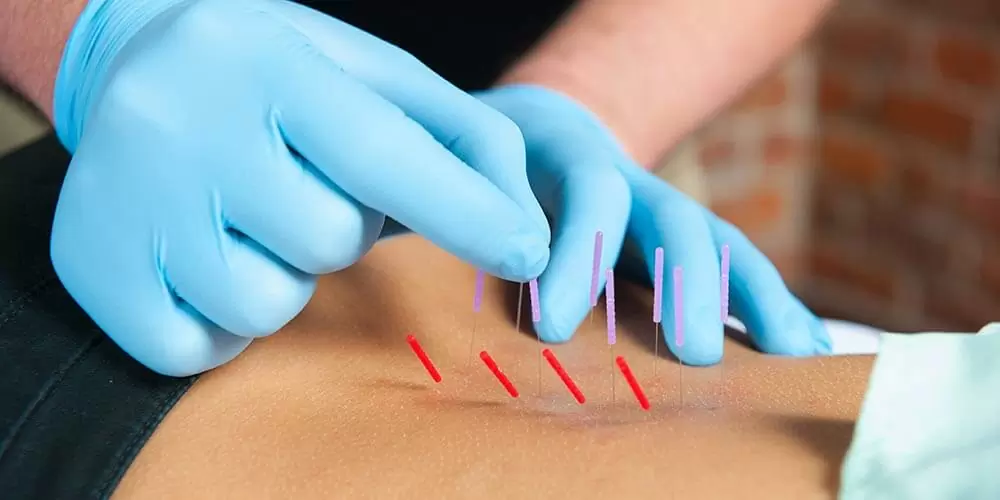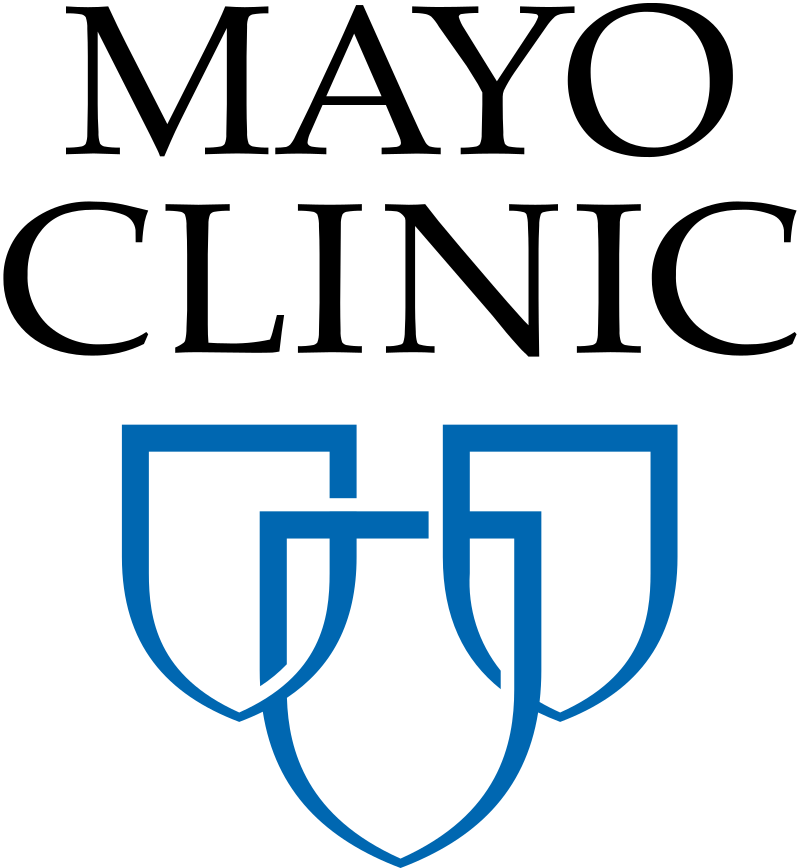Biomedical Dry Needling
Biomedical Dry Needling and Electro Dry Needling
What is dry needling?
Dry Needling is a treatment using a very fine/thin filament needle, an 8th of the size of a flu shot needle, to penetrate the skin and affect the underlying structures such as muscles, nerves, fascia, or ligaments. Needles activate the built-in survival mechanisms that normalize homeostasis and promote self healing. The Needles are also paired with an electrical stimulation which provides a stimulation to the entire muscle group and increase rapid recovery.
During this treatment, a provider inserts thin, sharp needles through your skin to treat underlying myofascial trigger points. In the word “myofascial,” “myo” means “muscle.” Fascia is the thin, white connective tissue wrapped around your muscles. Trigger points are knotted, tender areas that develop in your muscles. These trigger points are highly sensitive and can be painful when touched. Sometimes, a trigger point may be near the location of your pain. But they’re also often the cause of referred pain. Referred pain is pain that affects another part of your body.
Physical therapists use needles to alleviate your trigger points. When dry needling is applied to your muscles and tissues, it can decrease tightness, increase blood flow and reduce local and referred pain. Providers use solid needles that don’t contain any kind of medication. This is why the technique is called “dry.” Nothing is injected into your body.

Biological Effects and Benefits of Dry Needling:
- Tendon Regeneration
- Reversal of Chronic Inflammation
- Stimulation of Collagen Production
- Improved Circulation
- Pain Relief
- Reduce Inflammation
- Improved Range of Motion
- Prevent Surgery
- Cortisone Injection Replacement
- No Anasthesia Required
What can Dry Needling Treat:
- Joint Pains
- Low Back Pain
- Tendinopathies
- Arthritis
- Bursitis
- Plantar Fasciitis
- Rotator Cuff Issue
- Calcific Deposits in Rotator Cuff Tendons
- Bone Fractures
- Osgood Schlatter Disease
- Myofascial Pain Syndrome
- Trigger Points
- Achilles Tendinopathy
- Patellar Tendinopathy
- Tennis/Golfers Elbow
- Stress Fractures
- Morton's Neuroma
How does it work?
One way we use Dry Needling is where the needles are inserted to cause Micro-Injuries to symptomatic areas, associated nerves, and surrounding structures which signal the body to jump start the healing process. This process of Dry Needling consists of two mechanisms: Central and Peripheral. The central mechanism of Dry Needling stimulates parts of the brain which activate the nervous, endocrine, immune, and cardiovascular systems which in turn normalize the physiological activities of the entire body. The peripheral mechanism of Dry Needling triggers physiological reactions around the needling site and involves all four survival systems in desensitizing and repairing damaged tissues.When your muscle is overused, it goes into an energy crisis where the muscle fibers aren’t getting an adequate blood supply. When they don’t get the normal blood supply, they don’t get the oxygen and nutrients that allow your muscle to go back to its normal resting state. When this happens, the tissue near your trigger point becomes more acidic. Your nerves are sensitized, which makes the area sore and painful. Stimulating a trigger point with a needle helps draw normal blood supply back to flush out the area and release tension.
The prick sensation can also fire off nerve fibers that stimulate your brain to release endorphins, your body’s homemade pain medication. Once your Doctor locates a trigger point, they’ll insert a needle through your skin directly into it. They might move the needle around a little to try to get what’s called a local twitch response — a quick spasm of your muscle. This reaction can be a good sign that your muscle is reacting. Some people feel improvement in their pain and mobility almost immediately after a dry needling session. For others, it takes more than one session.

Note from the Mayo Clinic
Injecting a numbing agent or a steroid into a trigger point can help relieve pain. In some people, just the act of inserting the needle into the trigger point helps break up the muscle tension. Called dry needling, this technique involves inserting a needle into several places in and around the trigger point, which appears to be helpful for some people who have myofascial pain syndrome.
Current Research
- There are no differences between Dry Needling and Corticosteroid Injections in pain or disability for myofascial pain and greater trochanteric pain syndrome. Very-low certainty evidence suggests that Corticosteroid Injections is superior to Dry Needling at shorter follow-up periods, whereas Dry Needling seems to be more effective than Corticosteroid Injections at longer follow-up durations for improving pain in plantar fasciitis and lateral epicondylitis
- One study researched Dry Needling versus Corticosteroid Injections for the treatment of Hip Pain, which showed, that Cortisone injections for Great Trochanteric Pain Syndrome (Hip Pain) did not provide greater pain relief or reduction in functional limitations than Dry Needling.
- Another study looked at Dry Needling versus Cortisone Injections for the treatment of Plantar Fasciitis, and found that corticosteroid injection can palliate plantar heel pain rapidly but dry needling can provide more satisfactory results for patients with plantar fasciitis in the long term.
- The results of this clinical trial suggest that trigger point dry needling in patients with chronic tension-type headache is effective and safe in reducing headache intensity, frequency and duration, and increasing health-related quality of life.
- Osteoarthritis is one of the most common rheumatological diseases and is also considered as one of the causes of myofascial trigger points (MtrPs). Dry needling (DN) is one of the methods used for the treatment of the MtrPs. The application of one session Dry Needling can lead to improvement in pain intensity in participants with mild to moderate knee osteoarthritis..
- Another study looked at the effects of Dry Needling on Pain and Functional Balance and found that Dry needling in painful areas and penetrating all the muscle groups seems to improve pain and functional balance.
- This study showed that dry needling can be a promising tool for treatment-resistant sciatica patients with coexisting TrPs.
- The results of this study suggest that dry needling can be an effective treatment for reducing pain, number of trigger points, sensitivity, and kinesiophobia in patients with chronic low-back pain caused by lumbar disc hernia.
Spine
Upper Extremity
Lower Extremity
Neurological
Most reviewed and highest rated Physical Therapy clinic in Macon, Georgia and Bibb County!
Frequently Asked Questions
We highly recommend drinking more water for the next 24 hours after dry needling, which will help avoid/reduce soreness.
More information will be discussed before your Dry Needling Treatment with your Physical Therapist.
After having your initial evaluation, we will determine which treatments are most beneficial for you. The initial evaluation which will last for about an hour will include Dry Needling Treatment, if indicated for your diagnosis and if you qualify as a candidate.
Number of Sessions will be determined upon Initial Evaluation. Depending on severity of the patients condition, which will determine how many sessions. The Doctor of Physical Therapy will come up with a plan of care tailored to the patients benefit to promote optimal and rapid recovery.
Depending on which treatments the Doctor will be performing, sessions can last about an hour of Advanced Hands on Orthopedic Physical Therapy.
MVP Physio Dr. is located at 1645 Forest Hill Rd, Suite 105, Macon, GA 31210.
Fill out the Contact Form, located at the bottom of this page or you may contact our office directly at (478) 960-7077.
New Patient
Don’t become another number on a list at your typical local clinic. Come and get your 1-on-1, full hour, with an expert Doctor of Physical Therapy.
Having neck/low back pain that is chronic or acute, extremity pain, or any pain/limitations with your daily life activities? Then allow us to help you gain back your life and function.
